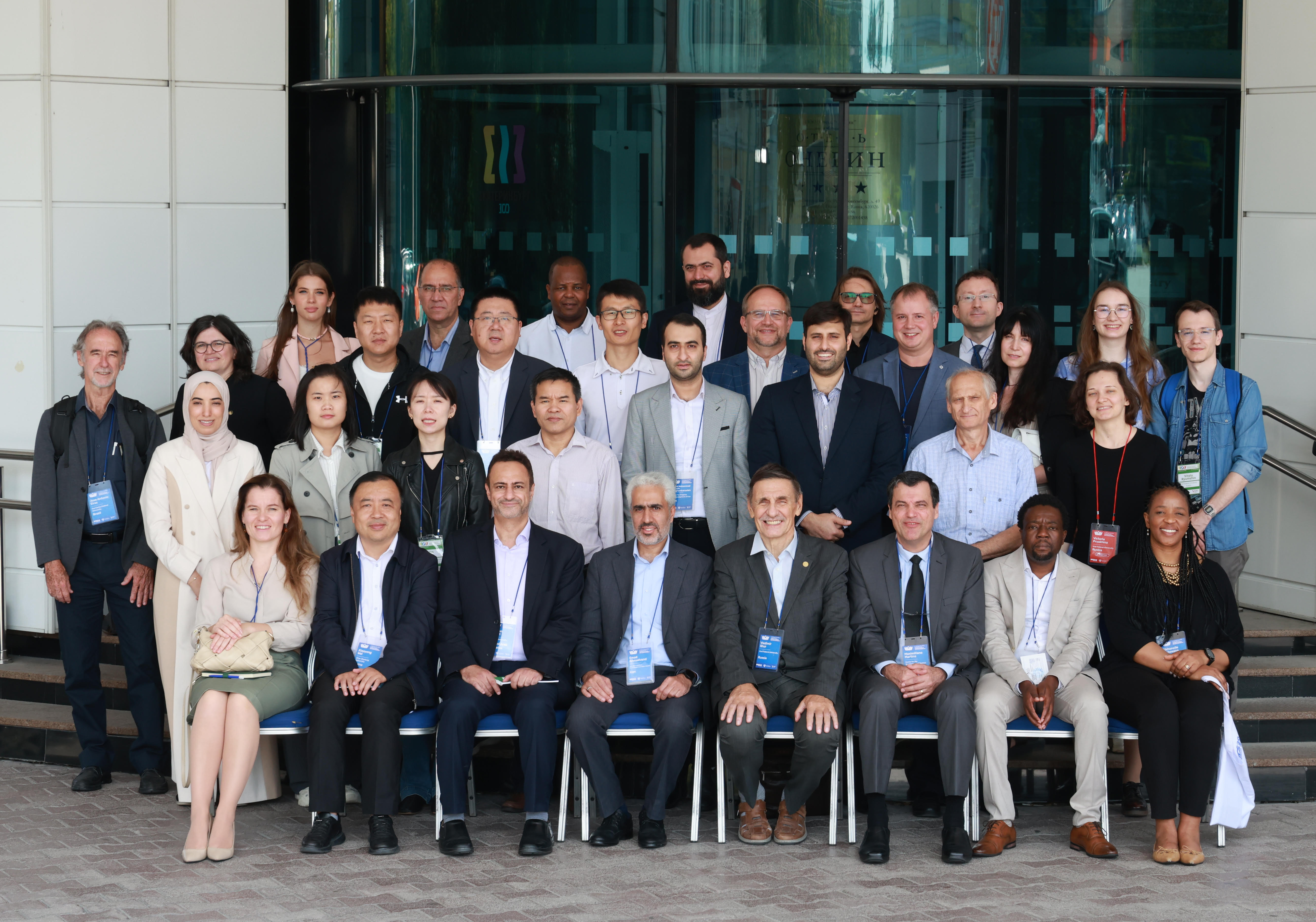Under the Russian BRICS Chairmanship year, the sixth meeting of the BRICS Working Group on Materials Science and Nanotechnology was held in Ekaterinburg on August 27-28, 2024, bringing together both the participants of the traditional five BRICS member-countries as well as newly joint states.
The event was supported by the Ministry of Science and Higher Education of the Russian Federation and the Ural Federal University named after the First President of Russia B.N. Yeltsin.
Stepan Sokolov, Deputy Director of the Department of International Cooperation of the Ministry of Science and Higher Education of Russia, addressed the participants with a welcoming speech. “Nanotechnologies is one of the priority areas of modern scientific research. Every year more and more resources – financial and people resources – are being involved in their development. Foresight studies all over the world, one way or another, link the future of mankind with nanotechnology and new materials. Many scientists have no alternative to nanotechnology in the near future” – noted the representative of the Ministry.
 |
 |
The participants of the event were also welcomed by the representatives of the regional government: Lyudmila Berg, Deputy Minister of International and External Economic Relations of the Sverdlovsk Region, and Anna Gurarii, Chairperson of the Ekaterinburg City Duma. They emphasized the importance of the meeting for strengthening international cooperation and development of high-tech industries in the region. Lyudmila Berg noted that the Sverdlovsk Oblast Government actively cooperates with the BRICS countries: in 2009 Ekaterinburg became the platform for the first meeting of the BRICS leaders, where fundamental strategic documents were adopted defining the directions of future cooperation between the association. It is worth noting that the Urals capital also hosted the very first meeting of the BRICS Working Group on Materials Science and Nanotechnology.
During the two-day meeting, experts and scientists from the BRICS countries presented reports on the results of the latest national developments and achievements in the field of materials science and nanotechnology. Special attention was paid to the activities of the BRICS Network Center for Materials Science and Nanotechnology (BRICS NCMSN), established by the initiative of the Russian side in 2015. The BRICS NCMSN unites leading universities and scientific organizations of the BRICS countries, being the leaders in their countries in materials science and nanotechnology areas. The participants have committed to provide information on each member organization, including information on available equipment, for publication on the Center’s website.
Another important topic of discussion was the approval of the priority thematic areas for joint R&D projects. The participants agreed to continue cooperation on the previously agreed topics: environmental and agricultural issues, advanced magnetic and segmentoelectric materials, materials for energy conversion and storage, and biomaterials and nanomedicine. As a result of the discussions, this list was supplemented by water treatment technologies.
 |
 |
During the meeting, the parties agreed to hold regular online seminars organized by universities and scientific organizations of the BRICS countries in the approved areas. The participants of the Working Group also appointed responsible persons forming the Steering Committee and taking responsibilities for coordinating the initiatives and further activities of the BRICS Network Center for Materials Science and Nanotechnology.
At the end of the meeting, the participants of the Working Group supported the proposal of Brazil to hold the next 7th Meeting of the BRICS Working Group on Materials Science and Nanotechnology in 2025 in the Brazilian city of Salvador.
In Ekaterinburg, an extensive scientific and cultural program was organized for the representatives of the BRICS countries. The delegates visited the Center for Collective Use of the Ural Federal University, where they saw several unique laboratories and got acquainted with the work of scientists. At the end of the meeting, the international participants visited a number of significant places in Ekaterinburg and the Sverdlovsk Region, including a symbolic visit to the obelisk on the border between Europe and Asia, which symbolizes not only the junction of the two continents, but also the cultural diversity of the world’s peoples.
